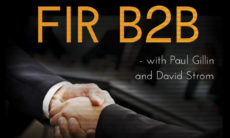Branding has evolved over time, opportunistically responding to what will best motivate customers and differentiate it from competition – from product branding, to rational branding, to emotional branding to today’s altruistic purposeful branding. With young consumers increasingly demanding brands give more back to society, the challenge today is to create a promise that can be trusted and delivered – with credible authenticity.
This trend for brands to create and communicate their CSR (corporate social responsibility) promises reflects a growing decline in trust in business. The Edelman Trust Barometer found that the trust level for business in the U.S. in 2018 was only 48%, down from 58% in 2017. A key reason for this decline in trust, especially amongst Millennials, is the increasing incidence of disinformation, or the murky distinction between truth and fiction. As a result, they want authenticity and are using the Internet to fact-check claims or promises to gauge a brand’s credibility.
The concept of “brand authenticity” can be elusive, however, especially with social media accepting many different opinions. At a minimum, the perception of authenticity depends on a brand’s honesty and transparency. Research confirms the importance of these authenticity values:
- According to a survey in 2017 by Survata for Sprout Social of social media users, almost half have actually called out brands, and 60% of them did so because of their perception of dishonesty. Honesty is even more important than customer experience with a brand, as fewer social media users (45%) complained about a bad product experience.
- A study by Ipsos, a major research firm, found that only 4% of respondents believe the advertising industry behaves with integrity. Also consumers are scrutinizing brand messaging and public profiles more than ever and are quick to condemn brands they feel are deceitful or inconsistent.
This issue of authenticity has become a challenge for brands adopting a purpose-driven message. Today more than ever, consumers are putting their faith in brands to stand for something – to do the right thing and help solve societal and political problems. The 2018 Edelman Earned Brand study found that 64% of global consumers (59% in U.S.) now buy on their belief of a brand’s principles, compared to 51% in 2017. This emergence of belief-driven buyers covers all age groups too, with the biggest rise among 55-year plus consumers which increased 18 points since 2017.
Transparency is essential; 60% of consumers say brands should make it easier to see its values and its position on important issues, even at the point of sale. Ensuring authenticity is critical for any purpose-driven marketing campaign. When brands treat causes as nothing more than marketing statements, they risk cheapening the importance of their selected issue. Audiences are savvier and more skeptical than ever, and if consumers perceive a message to be inauthentic, they will challenge, and possibly even boycott the brand. Strategically a brand must be prepared for such activism and align a purpose with their product, mission or a foundational story.
The use of storytelling in marketing has grown in recent years, and is particularly relevant for credibly showcasing a brand’s purpose or stand in ways that resonate and emotionally connect with targeted consumers. Storytelling works because it engages, a real challenge in our saturated world of data obsession, extreme clutter, volatility, and the decline of trust and credibility. Neuroscientists have shown that the brain wanders on average over 1,000 times per day (including daydreams), but storytelling stops this wandering and engages the listener or reader. They call this “neuro-coupling.” Importantly, neuroscience has also concluded that humans are more likely to make decisions based on emotions, not rational thinking.
Using storytelling to explain “who we are,” “what we have learned” and “why we are changing” for communicating a brand’s purpose will be far more credible, captivating and motivating. Storytelling describes a journey and is ideal for meaningful change. In short, it is the ideal communication method to ensure that a brand’s purpose is perceived as genuine, relevant and authentic.
There are several examples of brands that have used storytelling to reinforce their brand mission or purpose. Patagonia, for example, consistently reinforces its commitment to the environment with stories. Its mission: “We’re in the business to save our home planet.” Each marketing campaign has a story behind it, such as its recent “worn wear” offer that “celebrates the stories we wear, keeps your gear in action longer through repair and reuse, and recycles your garments when they’re beyond repair.”
Recognition for socially responsible brand performances is becoming a critical goal for many companies. The Ethical Corporation in London presents annual awards for such successful accomplishments, especially in the area of sustainability, where each purposeful brand winner has told an impressive story in their marketing campaigns. Previous award winners include Unilever, Royal DSM, ABN AMRO, TetraPak, Kimberly Clark, Tesco, Thai Union, GSK and Heineken.
Brands truly succeed when they listen and respond to changing consumer demands. Today people want a brand to address societal issues, but are very sensitive to disinformation. They want promises that are credible, honest and authentic. Good storytelling can work for these purposeful brands.







